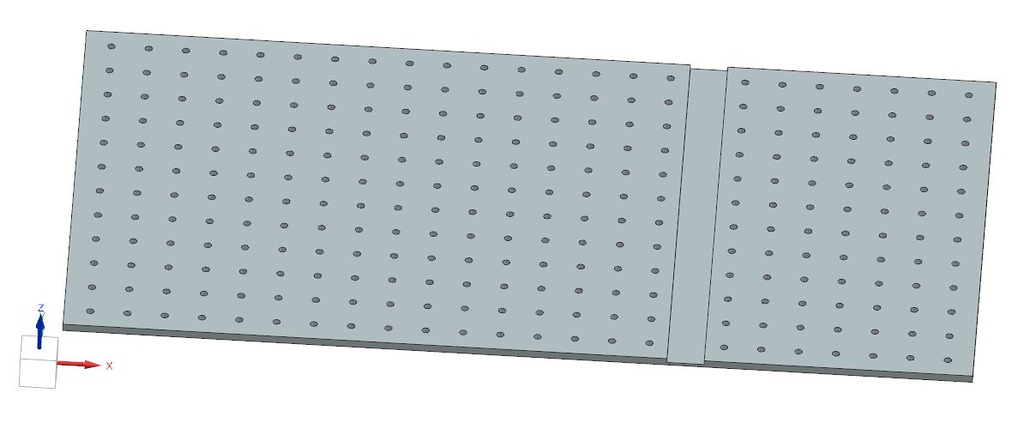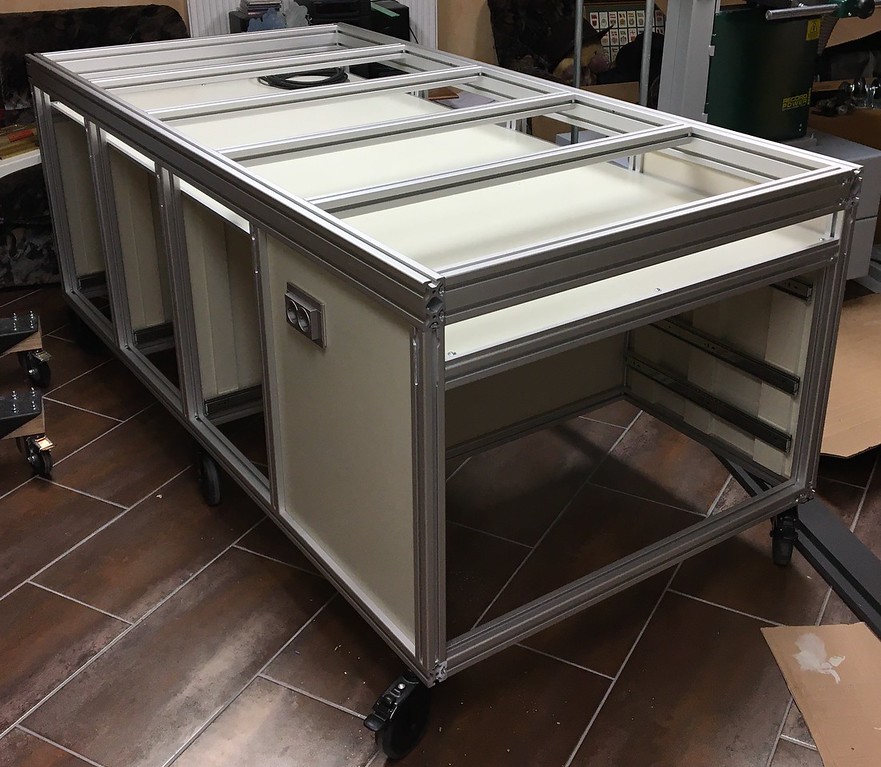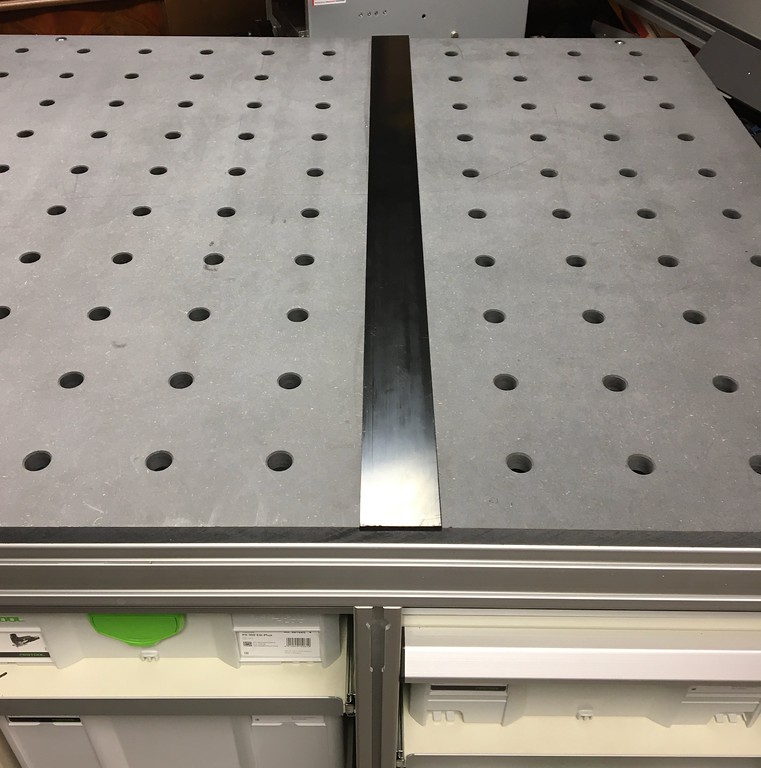FranWood
Established Member
Morning all.
I'm getting some panels CNC routed from the Sydenhams / Avonply.com for an office desk. I also want to get a MFT top CNC cut so I figured whilst I'm paying for delivery of the other panels I may as well get them to cut and ship a MFT top for me. I've got a couple of questions regarding hole spacing and material....
1) The 'standard' hole spacing for MFT tops seems to be 96mm and I've read some threads about where this figure comes from. My question is, if I'm having one custom made, does it need to be 96mm? I would be much happier if it was 100mm as makes more sense and will be more useable to me but will I be limiting myself if I move away from 96mm? I guess as long as the holes are all perpendicular to each other it doesn't really matter but I was wondering if not using 96mm would limit me in some other way, i.e. MFT accessories etc or another reason?
2) I'm probably going to get a 2440x1220 panel cut. I imagine I would want moisture resistant MDF for a work shop and they have this in 18mm, 22mm, 25mm & 30mm. I'll get prices but I imagine 22mm might be a good option for this size?
They also stock Valchromat Coloured MDF which is supposted to be moisture resistant but I don't know how this compares to their standard MF MDF which I believe is from Medite.
This will be my first MFT so I would welcome any advice or input. Thanks in advance.
I'm getting some panels CNC routed from the Sydenhams / Avonply.com for an office desk. I also want to get a MFT top CNC cut so I figured whilst I'm paying for delivery of the other panels I may as well get them to cut and ship a MFT top for me. I've got a couple of questions regarding hole spacing and material....
1) The 'standard' hole spacing for MFT tops seems to be 96mm and I've read some threads about where this figure comes from. My question is, if I'm having one custom made, does it need to be 96mm? I would be much happier if it was 100mm as makes more sense and will be more useable to me but will I be limiting myself if I move away from 96mm? I guess as long as the holes are all perpendicular to each other it doesn't really matter but I was wondering if not using 96mm would limit me in some other way, i.e. MFT accessories etc or another reason?
2) I'm probably going to get a 2440x1220 panel cut. I imagine I would want moisture resistant MDF for a work shop and they have this in 18mm, 22mm, 25mm & 30mm. I'll get prices but I imagine 22mm might be a good option for this size?
They also stock Valchromat Coloured MDF which is supposted to be moisture resistant but I don't know how this compares to their standard MF MDF which I believe is from Medite.
This will be my first MFT so I would welcome any advice or input. Thanks in advance.




































